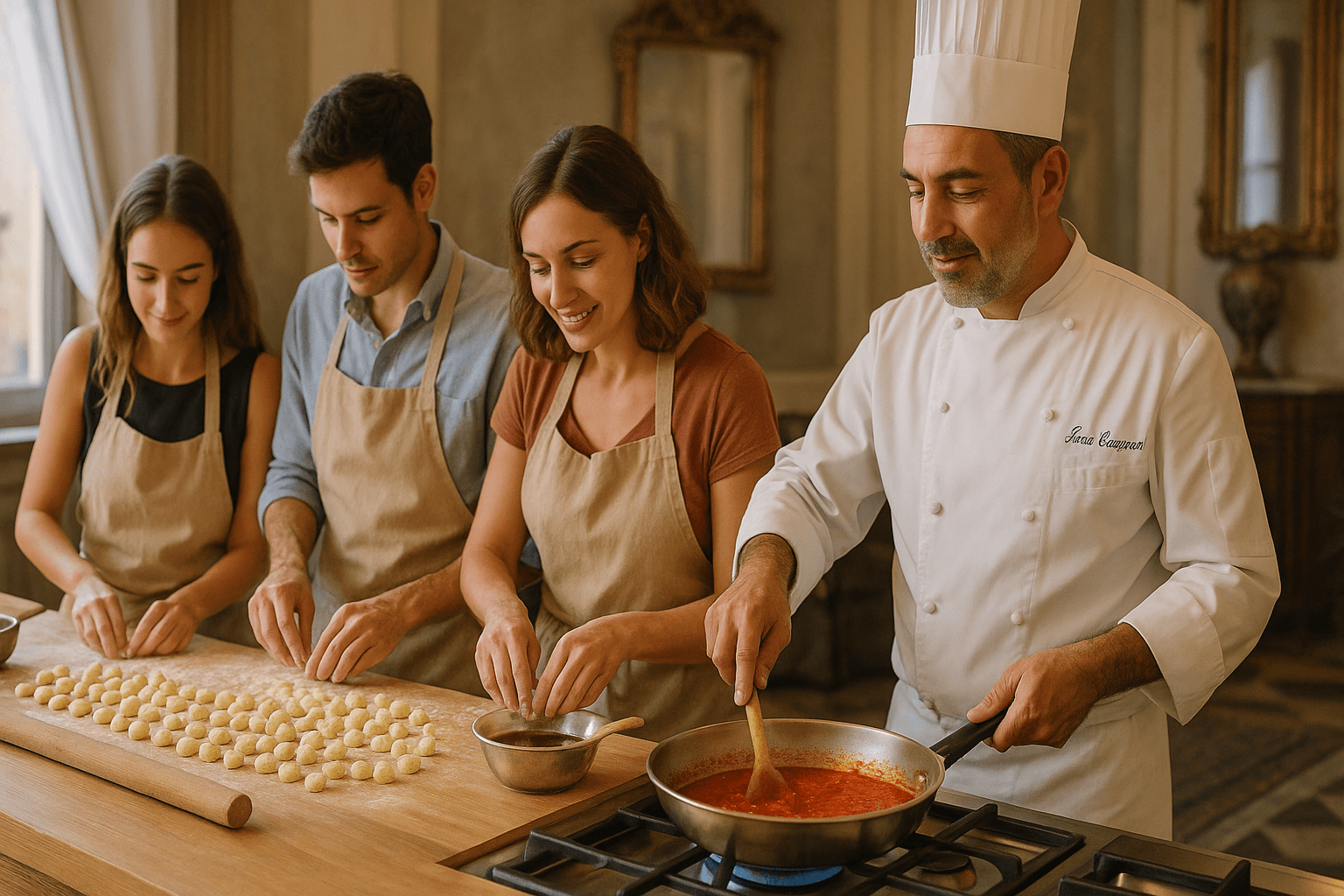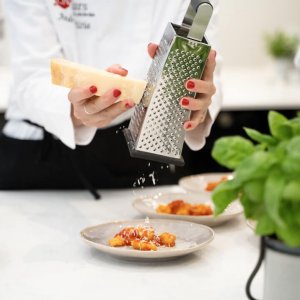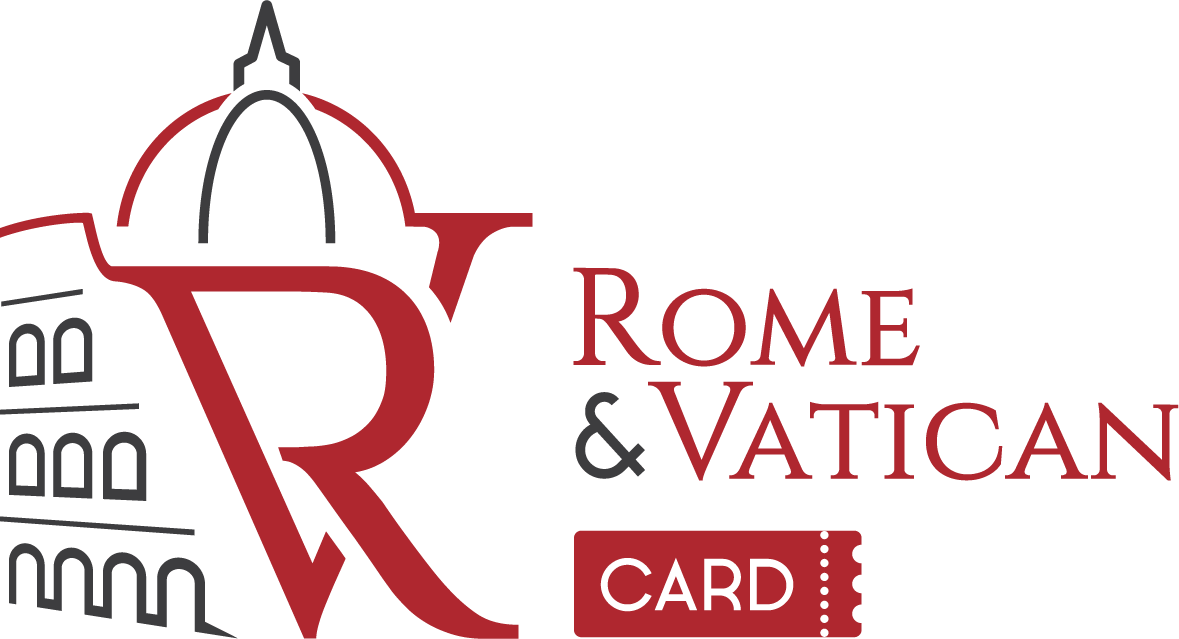Join a fresh pasta cooking class in Rome: why is worth it, Chef tips and ingredients guide
- 6 min read
Joining a fresh pasta cooking class in Rome offers travelers an authentic market-to-table experience, combining a guided visit to Mercato Trionfale with a hands-on gnocchi lesson led by a professional Italian chef.

Why a fresh pasta cooking class in Rome is worth it
A fresh pasta cooking class in Rome offers travelers far more than a simple cooking activity. Although visitors may explore Rome’s landmarks and restaurants, a hands-on pasta lesson adds a layer of authenticity that is difficult to match. Below is a structured and intuitive breakdown of why this experience is truly worth it, especially for tourists seeking meaning, taste, and culture.
- Direct contact with Italian culinary traditions
- Learning authentic and ancient italian pasta techniques
- Stories and techniques shared by a local chef
- You can participate actively — not just watch
- Understanding high-quality fresh ingredients and their role
- Take-home recipes for continued practice
- A break from standard restaurants
- Small groups ensure personal attention

Fresh pasta cooking class with professional Italian Chef: learn how to make traditional gnocchi
What will I learn in a Rome fresh pasta cooking class
Enrolling in a fresh pasta cooking class in Rome means acquiring essential skills that you can use in your home kitchen. At first, the session usually begins with an introduction to the equipment, because understanding the tools is one of the most important steps before starting the dough.
Core skills taught by professional Italian chefs
Participants learn how to combine flour and eggs in the correct ratios, because italian-style dough has specific textures that must be respected. As well as gaining confidence with kneading and resting times, visitors discover how humidity, temperature, and flour quality influence the final result.
Techniques for dough, shaping, and seasonal sauces
As much as dough preparation matters, shaping the pasta is equally significant. Consequently, the chef demonstrates how to roll out sheets, cut fettuccine, or form small pasta varieties. As shown above, hands-on repetition helps each person master the consistency required. Concurrently, simple yet iconic Roman sauces — such as cacio e pepe or fresh tomato sauce — are introduced.
Using traditional tools and local cooking methods
Although modern tools exist, most chefs in Rome prefer traditional wooden boards and rolling pins. Comparatively, these tools provide a better surface for dough elasticity. As soon as participants become familiar with the technique, the process flows naturally.
How long is a typical pasta class in Rome
A typical fresh pasta cooking class in Rome lasts between 2 and 3 hours. Doubtlessly, the duration varies depending on whether the experience includes a full meal, wine pairing, or additional dishes like tiramisu. As an illustration, morning classes may start with a market visit before moving into the kitchen.
Learn why high-quality seasonal ingredients matter in making fresh pasta in Rome
In a fresh pasta cooking class in Rome, ingredient quality plays a central role. Although fresh pasta may seem simple, its success depends heavily on the choice of flour, eggs, and seasonal produce. As a matter of fact, Italian chefs rely on seasonal ingredients because they deliver better flavor, color, and texture.
Typical ingredients used in Rome’s fresh pasta classes
- “00” flour – smooth and ideal for classic fresh pasta.
- Semolina flour – adds structure and firmness.
- Fresh local eggs – richer color and flavor.
- For sauces: extra virgin olive oil, tomatoes, basil and parsley, high-quality butter, pecorino romano, parmigiano reggiano
Attend a small fresh pasta cooking class with a local Italian Chef
Another key point when choosing a fresh pasta cooking class in Rome is the class size. Because pasta making is hands-on, small groups allow the chef to guide every participant effectively.
- Advantages of small-group cooking experiences: As a result of this intimate setting, tourists receive personalized feedback. Before shaping the pasta, the chef usually checks each person’s dough, ensuring consistency.
- Role of the chef in guiding each step: besides giving instructions, the chef shares local traditions and family stories that enrich the experience. Comparatively, this insider perspective is something restaurants cannot offer.

Fresh pasta cooking class with professional Italian Chef: learn how to make traditional gnocchi
Types of Italian fresh pasta cooking class
Although all pasta classes share a similar foundation, there are several types tailored to different preferences.
- Gnocchi-focused classes: These sessions teach the delicate balance between potatoes, flour, and technique.
- Fettuccine, tagliatelle, and filled-pasta workshops: Another strong option includes workshops centered on long pasta shapes or ravioli.
Top Gnocchi fresh pasta cooking class in Rome + visit to Trionfale Market
A fresh pasta cooking class in Rome becomes even more memorable when combined with a visit to Mercato Trionfale — Europe’s largest covered food market. Although many travelers simply join a cooking session, this market-to-table experience offers a deeper look into Roman food culture.
A market-to-table culinary journey
Starts inside Mercato Trionfale, a beloved local landmark with more than 270 stalls. As can be seen while walking through the aisles, the market showcases the rhythm of everyday Roman life through colorful displays of vegetables, herbs, cheese, olives, and seasonal produce.
Alongside the chef, participants select fresh ingredients directly from friendly vendors — ripe tomatoes, fragrant basil, high-quality potatoes, and other essentials needed for the gnocchi-making session.
From market stalls to a modern cooking school
After the market visit, the group reaches a nearby state-of-the-art cooking school, equipped with custom-designed, luxury kitchens. In a small group of maximum six guests, each person has a dedicated workstation. Consequently, the chef can offer personalized guidance at every step, ensuring an engaging, hands-on learning moment.
Learning to prepare gnocchi from scratch
The cooking class focuses entirely on homemade gnocchi. Participants boil potatoes, mix flour and eggs, and shape the dough gently by hand. Although the technique may appear simple, the chef explains the nuances of texture, timing, and pressure.
The sauce preparation follows the same seasonal logic seen in the market.
Before leaving, you’ll receive a digital recipe booklet, allowing them to recreate the class at home and share their new skills with friends and family.

Fresh pasta cooking class with professional Italian Chef: learn how to make traditional gnocchi
FAQ About Fresh Pasta Classes in Rome
Are pasta making classes in Italy worth it?
Yes, because the hands-on learning offers cultural immersion and culinary skills.
Should you do a cooking class in Rome?
Certainly, Rome offers traditional recipes and expert chefs.
What are the 4 types of pasta in Rome?
Cacio e pepe, carbonara, amatriciana, and gricia.
Where should you do a cooking class in Italy?
Rome remains a top choice due to its variety and accessibility.
What are the two rules in Italian cuisine?
Use quality ingredients and keep recipes simple.
What will I learn in a Rome cooking class?
Dough preparation, shaping, sauces, and Italian cooking methods.
What food not to miss in Rome, Italy?
Roman pastas, supplì, artichokes, and seasonal dishes.
What are the 4 classic Roman dishes?
Carbonara, cacio e pepe, amatriciana, and gricia.
What happens during a cooking class?
Participants prepare, cook, and enjoy their dishes.
What to wear to a cooking class?
Comfortable clothing and closed shoes.
How long is a typical pasta class in Rome?
Usually 2–3 hours.
